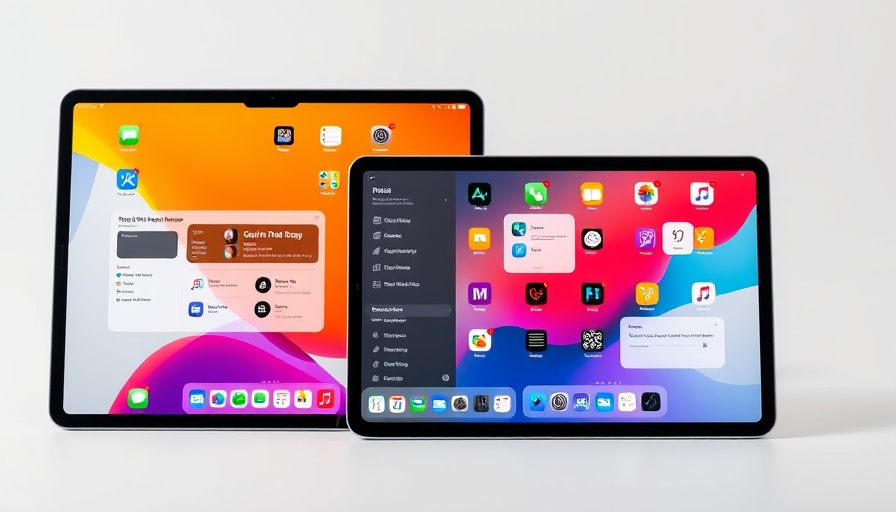
iPadOS 26: Transforming the iPad into a More Mac-Like Experience
With the impending launch of iPadOS 26, Apple is poised to revolutionize how users interact with their iPads, making them feel less like overgrown iPhones and more akin to the Mac experience. This year's update builds on a series of innovations introduced in both iOS 26 and macOS Tahoe, and Apple describes this new operating system as the "biggest iPadOS release ever." Here’s what you can expect as the iPad redefines its role in both personal and professional environments.
A Blend of Design and Functionality
The aesthetics of iPadOS 26, featuring a sleek Liquid Glass design, sets the tone for an upgraded user experience. This design overhaul is more than skin-deep; it paves the way for significant functional upgrades that align the iPad’s capabilities with that of the Mac. Users can now access a new window management system, replicating the multitasking prowess of traditional computers, thus enhancing productivity for work and educational tasks.
New Features Tailored for Multi-Taskers
One of the standout features in this update is the introduction of folders. Users who harness their iPads for work or academic purposes will find value in the revamped Files app, which allows files to be organized intuitively. New window displays also facilitate a smooth user experience, by enabling users to view all open applications at a glance and tile them in a way that accommodates multitasking. These features combined foster a workflow that closely resembles that of a Mac, catering to those who depend on their devices for efficiency.
Empowering Creators and Professionals
Creators, especially those in fields that require intense computational power, will appreciate the iPad's newfound ability to manage extensive tasks. For instance, exporting high-definition videos from Final Cut Pro can now be done in the background, allowing users to continue with other responsibilities simultaneously. Additionally, this version of iPadOS offers tailored recording settings, letting users specify audio and video inputs depending on the app to ensure high-quality outputs. The inclusion of voice isolation technology and the synergy with AirPods 4 or AirPods Pro 2 claim to produce "studio-quality" outputs, making the iPad an enticing choice for podcasters and video producers alike.
Advanced Features with Apple Intelligence
Apple has also integrated some of its latest intelligence enhancements into iPadOS 26, ushering in features like Live Translation across apps such as Phone and FaceTime. This groundbreaking enhancement allows users to engage in conversations with real-time translations that maintain the integrity of the original voice, further breaking down language barriers. Such capabilities not only smoothen communication but also ensure that the iPad becomes a more versatile tool for collaboration.
On The Horizon: What's Next for Users?
Anticipations are high for how these features will perform as they roll out. The iPad, historically positioned as a device for light browsing and casual use, is now stepping firmly into a dual role encompassing both leisure and productivity. As users begin to adopt iPadOS 26, the potential for it to serve as a primary device in both creative and professional settings could alter the landscape of personal computing.
Conclusion: A New Era for iPad Users
iPadOS 26 is setting an exciting precedent for how tablets can function in users' lives. With its extensive innovations offering a refined user experience, enhanced productivity, and creator-focused tools, users have more reasons than ever to consider the iPad as their go-to device - blending the best of both mobile and desktop environments. As we look ahead, the future of device connectivity and productivity seems promising, positioning the iPad not just as a companion but as a powerhouse in its own right.
 Add Row
Add Row  Add
Add 



Write A Comment